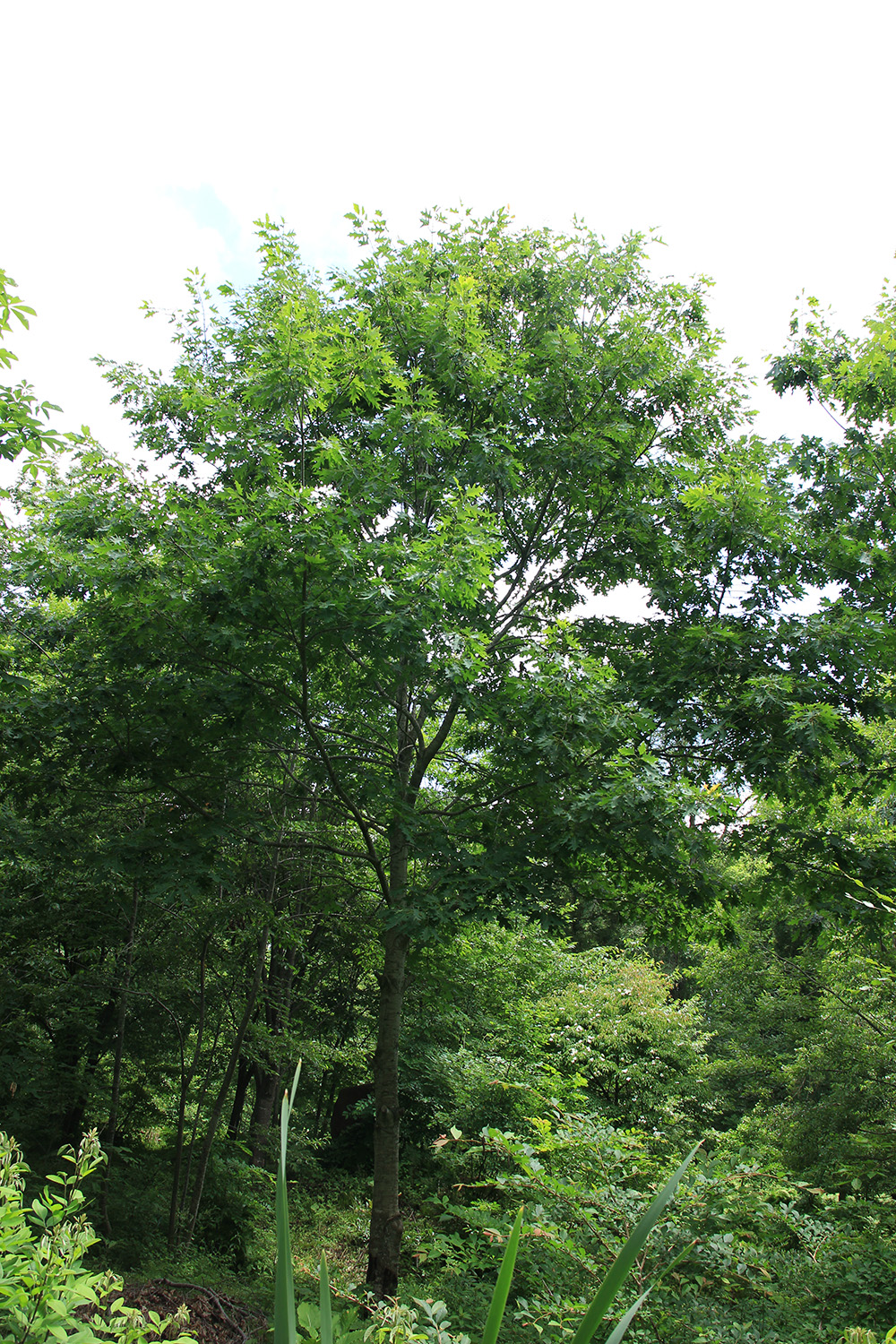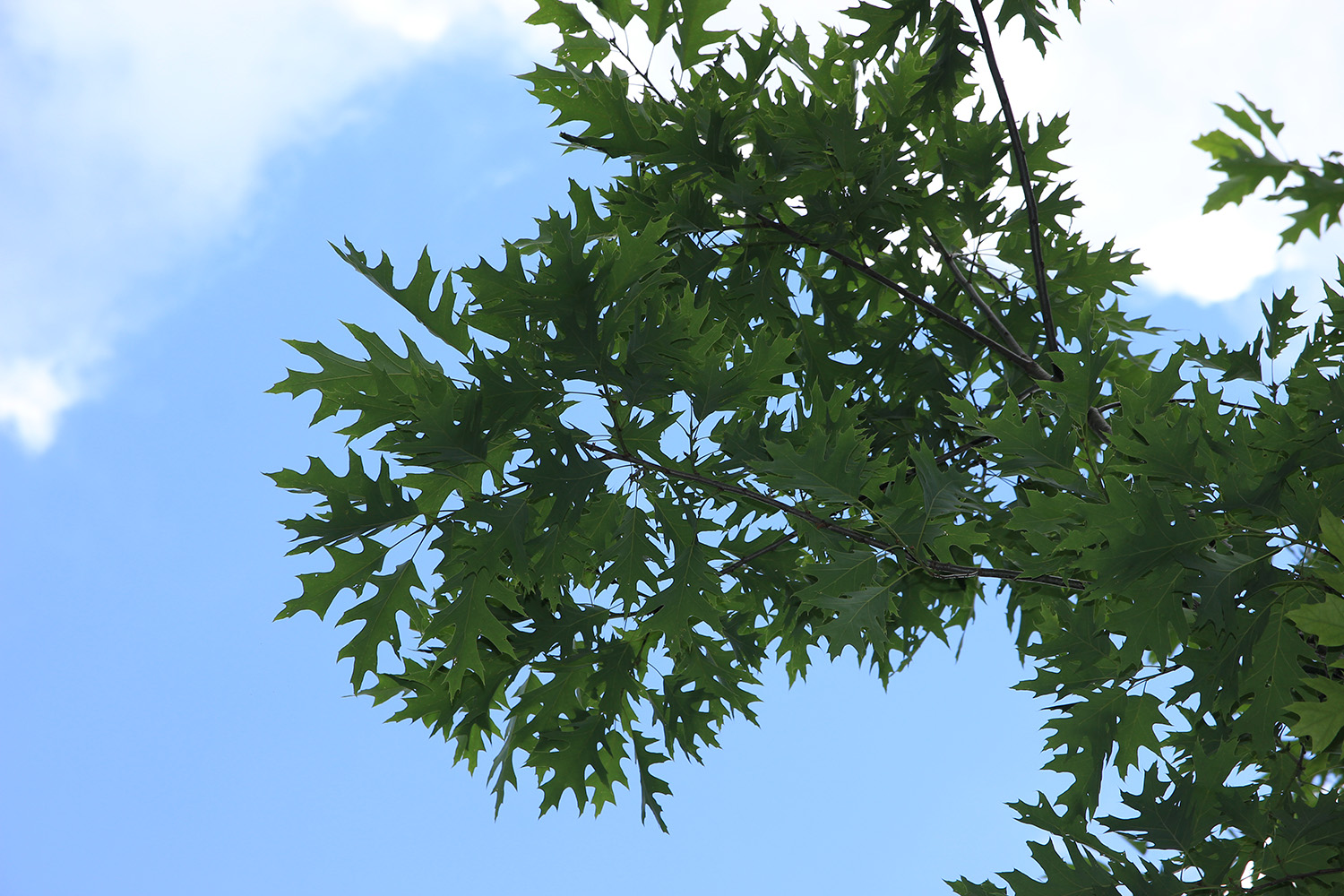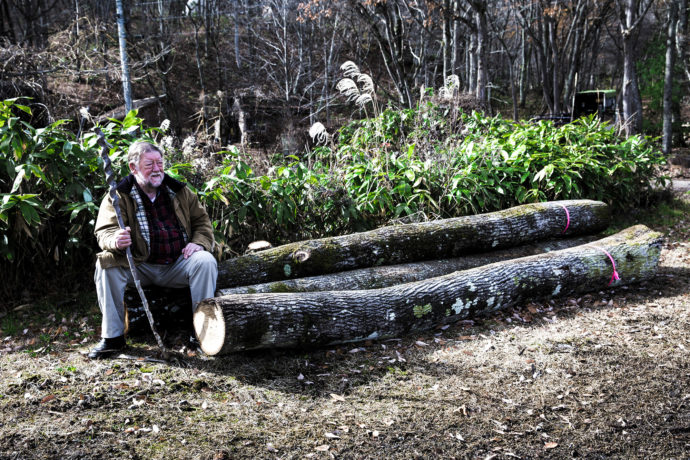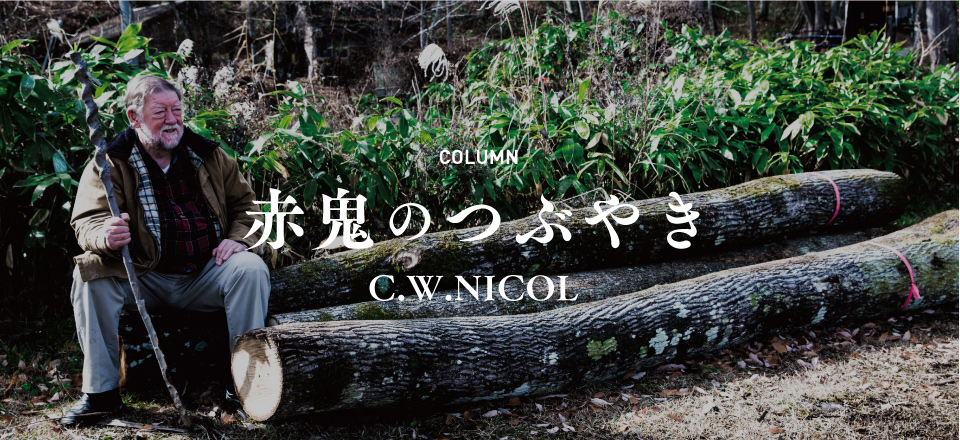Column
【赤鬼のつぶやき C.W.ニコル】ノーザンレッドオーク(NORTHERN AMERICAN RED OAK)
アファンの森の手入れを始めてから16年の間に、今は勇退されたアファンの守り人、林業家の松木さんと私は外来種の木を4種、植えました。 どれも文化的、歴史的に大きな意味を持つ種です。 その後、私は森や関係する資産を寄付し、財団法人を設立することを決めました。 アファンの森財団では、外来種は植えないという方針を掲げましたが、この4種の“よそ者”(私のような!)には、特別な居場所を用意したいというのが私の願いでした。 それは4種の木がどれも、語り継ぐべき物語を持っていたからです。万一、それらの木々が繁殖しすぎて生態系のバランスを乱す恐れが生じた場合には、すべて伐採すればいいだけのこと、問題ないならこのまま成長を見守り、物語を語らせてやりたい、そう考えました。 今回ご紹介するノーザンレッドオーク(アカガシワ/学名:Quercus rubra)もその一つです。

20年ほど前、NHKでヘンリー・デイヴィッド・ソロー(1817~1862)のドキュメンタリー番組を制作しました。米国の偉大な詩人であり、思想家、ナチュラリストであるソローは1854年から2年間、米マサチューセッツ州コンコードの「ウォールデン池」と呼ばれる湖のほとりに自ら建てた小屋で暮らしたことでも知られています。 ソローが遺した言葉で私が好きなものを1つ、ご紹介しましょう。
“ All good things are wild and free. ”(すべての善なるものは自然の中に在り、誰もが代価なく手に入れることができる)
ソローは、自然の中での質素な生活こそが善だと信じており、1854年に出版した著書『ウォールデン 森の生活』の中でも、そのことを雄弁に語っています。 ドキュメンタリーの撮影をする際、コンコード管理局は私に、ソローの小屋で簡単な魚料理を作ることを許可してくれました。 彼が暮らした小屋の暖炉で、ソロー愛用の古いフライパンを使うことを許されたのです。 なんと光栄なことでしょう!旅の思い出に、私は小屋のかたわらに立つ大木のドングリを何個か拾ってポケットにしまいました。 今にして思えば、これを日本に持ち込むのは規則違反でしたが、自己弁護をさせていただくと、ドングリを入念に調べて、病気のないもの、虫のついていないものを選んで持ち帰り、自宅の冷蔵庫で数か月保存してから植えました。

レッドオークは成長が早く、寒さに強い上、どんな土壌にも根づきます。 原産地は米国中東部、カナダ南中央部ですが、私たちがアファンの森に植えた数本のレッドオークも順調に育ちました。 樹齢は400年前後と言われ、高さは90フィート(約28メートル)ほどに達します。 レッドオークのドングリはタンニンの含有量が非常に多く、恐ろしく渋いため、アファンの森に住む野生生物からの人気は今一つ――といっても、私たちにとってはむしろそのほうが好都合です。 美味しいからと皆に食べられれば、それだけ広範囲に繁殖する可能性も高くなるのですから。 仮にそうなったとしても、未来の林業家がせっせと伐採すればいいだけの話ですが。
レッドオークは高品質の薪となり、米国では非常に重要な木材となっています。 木質は硬くて丈夫、色はほんのり赤みを帯びた薄い褐色で、辺材はもう少し濃い色をしています。 良質の家具を作るには、十分に乾燥させることが必要です。 また、レッドオークは建材としても人気があります。

現在、アファンの森のレッドオークは高さが5~7メートルになり、樹皮は滑らかで薄灰色をしています。 葉は、全体に丸みを帯びたイングリッシュオークとは異なり、縁が深く切れ込み、先端が鋭くとがった鋸歯のような形が特徴です。 秋になると見事に赤く色づくことから、レッドオークは世界各地の公園や庭園を彩る観賞用の木としてとても人気があります。 これまで、アファンの森を案内したお客様の中で、レッドオークについて言及ないし質問をされた方は一人もいませんでした。 どうやら、うまく環境にとけ込んでいるようです。 「赤鬼」の異名を持つ私としては、紅葉するレッドオークに対して気の合う仲間のような親しみを感じずにはいられません。 私が旅立った後も末永くこのアファンの森で生き続け、ソローと、この老いた赤鬼を偲ぶ縁(よすが)になってほしいと願っています!
C.W.ニコル
2019年6月
写真提供:C.W.ニコル・アファンの森財団
NORTHERN AMERICAN RED OAK (Quercus rubra)
In the first sixteen years of nurturing our Afan woods, before I donated them to our trust, Matsuki-san (now retired) and I planted four different, foreign species, each with unique cultural and historical significance. Since the trust came into being no alien species have been planted, but it is my wish that the four ‘foreigners’ (like me!) be given a special place because they all tell a tale. If any of them begin to spread and become a nuisance, then it will be simple to harvest them. If not, I hope that they be allowed to grow and tell their stories. One of these is the Northern American Red Oak.
About twenty years ago I made a television documentary for NHK on the life of Henry David Thoreau (1817 – 1862) the great American poet, philosopher and naturalist, who for two years, starting in 1854, lived in a small cabin by a lake called Walden Pond, in Concord, Massachusetts, USA.
One of my favorite quotes from Thoreau is ‘All good things are wild and free.’ Thoreau believed in simple living in natural surroundings, and wrote most eloquently about this in his book ‘Walden Pond,’ published in 1854.
For the NHK documentary, the Concord authorities gave me permission to cook a simple meal of fish in Thoreau’s cabin, using Thoreau’s old skillet, on a wood fire in his fireplace. What a great honour!
As a souvenir of the visit, I pocketed several acorns from the great tree growing beside the cabin. I realize that bringing them back to Japan this was against the rules, but in my defense I checked very carefully that the acorns were healthy and free from disease or pests. I kept them in my refrigerator for several months before planting them.
The red oak grows quickly, and is tolerant of cold and all kinds of soils. They are native to east and central USA and south-central Canada. The few we planted flourished in Afan. Red oaks can reach the age of around 400 years, and grow to be 28 metres tall. Red oak acorns are very high in tannin, extremely bitter, and are therefore not so popular with our wildlife. That’s good, because the trees are not so likely to spread. If they do, future foresters can always harvest them.
Red oak makes excellent firewood, and is a very important tree in America. The wood is hard and strong. It is pale, reddish brown in colour, with darker sapwood. It needs to be carefully dried in order to make high quality furniture. Red oak is also popular in construction.
Our trees are now five to seven metres tall, with smooth, light grey bark. The leaves have distinctive pointed lobes, unlike the rounded lobes of the English oak. They turn a gorgeous red in autumn. Internationally, red oak is a very popular ornamental tree for parks and gardens.
So far, not a single visitor that I have escorted through our Afan woods has made any remarks or asked any questions about our red oaks, so I guess they have merged in well with their surroundings. My nickname is ‘aka oni’ so I can’t help but feel a kindred spirit with these red-leaved trees. I pray that they will live on in Afan for many years after I am gone, in memory of Thoreau and this old red devil!
C.W. Nicol
June . 2019
C.W.ニコル
作家・1940年イギリス南ウェールズ生まれ。1995年日本国籍取得。カナダ水産調査局北極生物研究所の技官・環境局の環境問題緊急対策官やエチオピアのシミエン山岳国立公園の公園長など世界各地で環境保護活動を行い、1980年から長野県在住。1984年から荒れ果てた里山を購入し「アファンの森」と名づけ、森の再生活動を始める。2005年、その活動が認められエリザベス女王から名誉大英勲章を賜る。2011年、2016年に天皇、皇后両陛下がアファンの森をご視察された。





